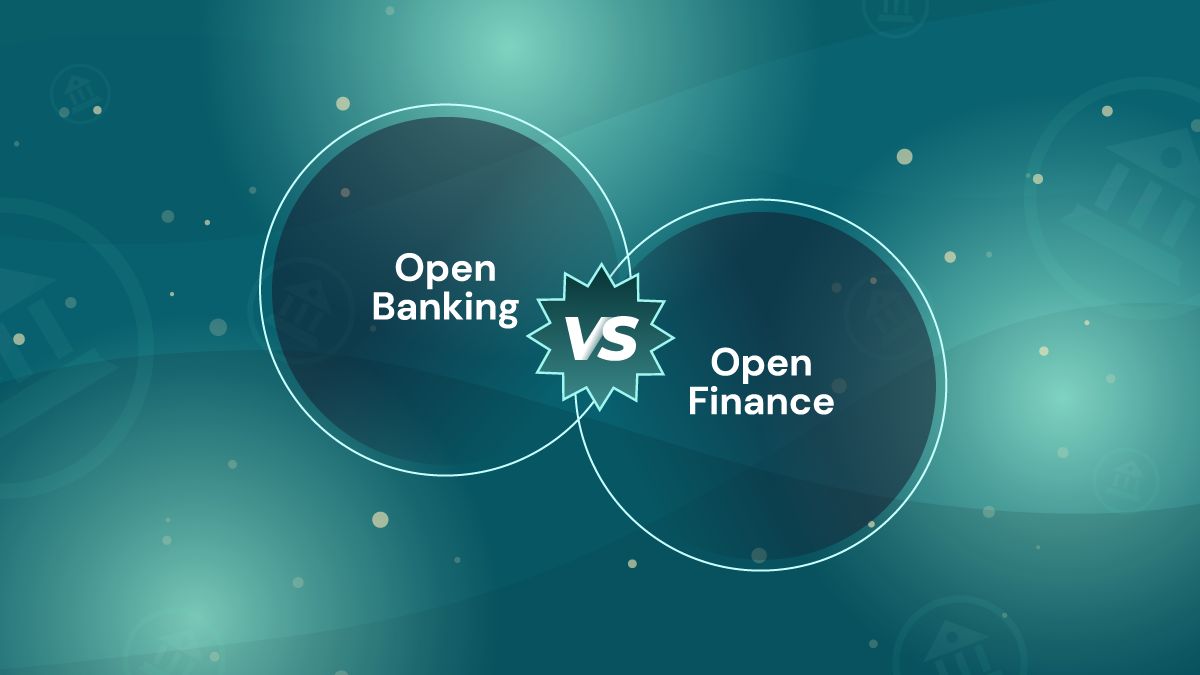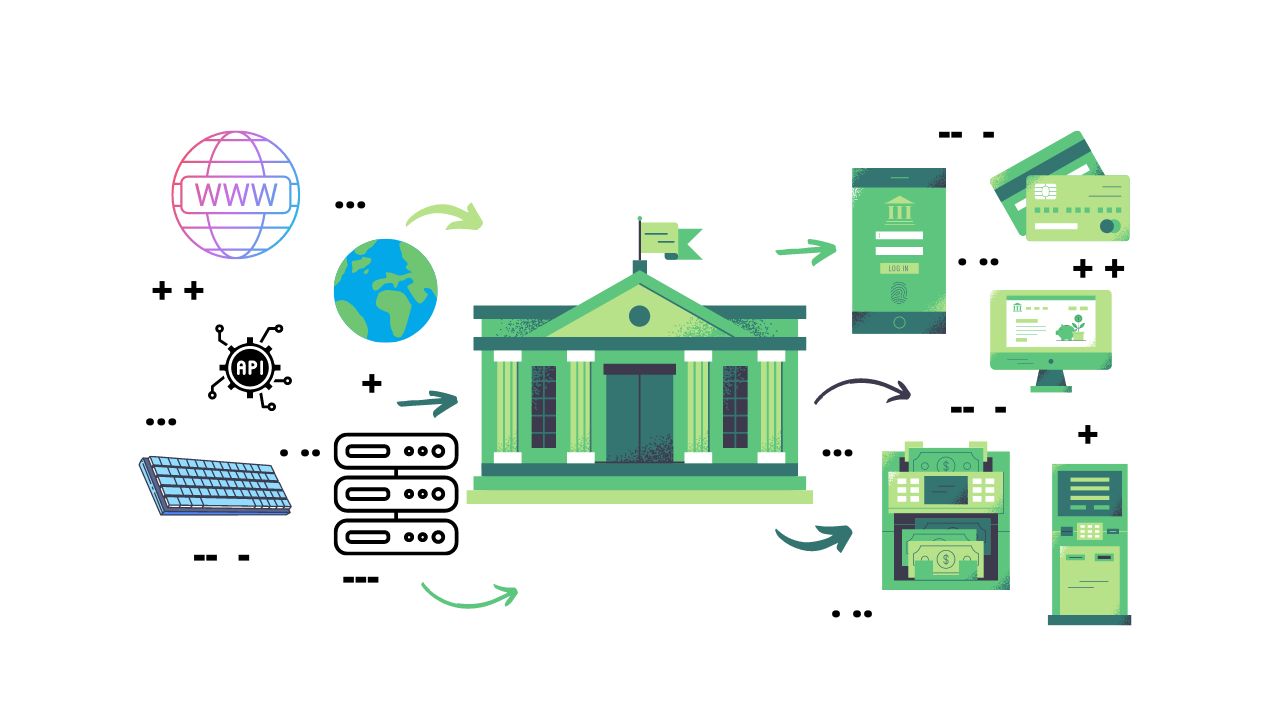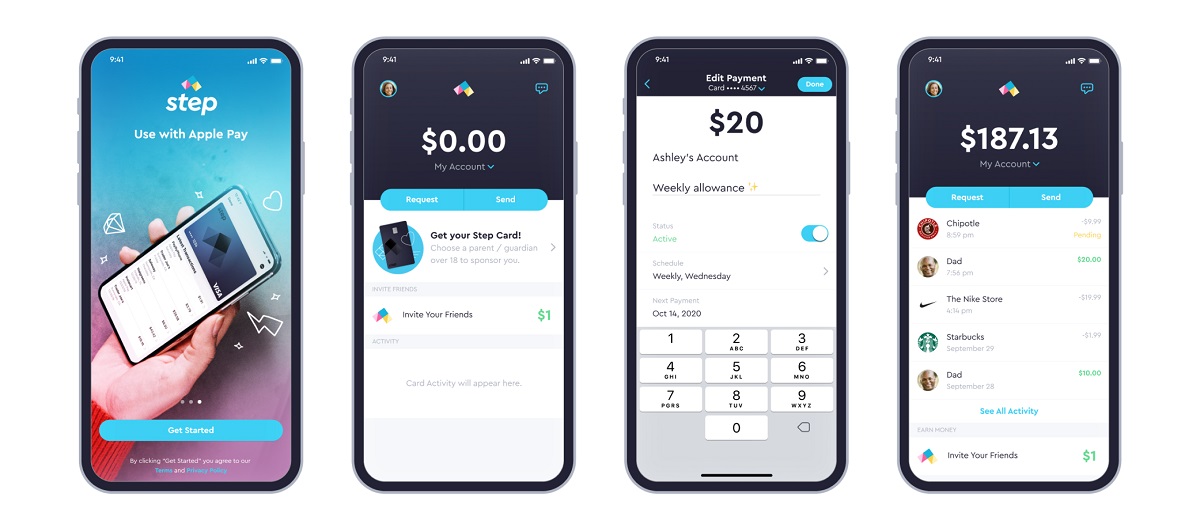Introduction
As the world becomes increasingly digital, traditional industries are facing disruption from technology-driven innovations. The financial sector is no exception, with concepts like Open Banking and Open Finance revolutionizing the industry. These terms may sound similar, but they possess distinct meanings and implications.
Open Banking is a concept that emerged in response to the need for greater transparency and customer control over financial data. It involves banks opening up their customer data, securely, to third-party applications through Application Programming Interfaces (APIs). This enables customers to share their information with trusted third-party providers, such as fintech startups, to access a range of innovative financial services. Open Banking has gained traction across the globe, fueled by regulatory initiatives like the Revised Payment Services Directive (PSD2) in the European Union.
Open Finance, on the other hand, is an extension of the Open Banking model. It encompasses a broader range of financial data beyond the traditional banking sector. Open Finance extends the principles of Open Banking to include other financial institutions and sectors such as insurance, investments, pensions, and mortgages. This expansion allows consumers to access a holistic view of their financial situation and empowers them to benefit from a wide range of personalized financial products and services.
The key differences between Open Banking and Open Finance lie in their scope, data coverage, regulation, and use cases. While Open Banking primarily focuses on sharing banking data, Open Finance extends this concept to all sectors of the financial industry. Open Banking is regulated and mandated by government initiatives, such as PSD2, whereas Open Finance is currently at a nascent stage and lacks a unified regulatory framework.
The implementation of Open Banking and Open Finance brings numerous benefits to consumers, including improved financial products, enhanced competition, and increased access to innovative services. However, it also presents risks such as data security and privacy concerns, as well as a potential imbalance in the market caused by dominant players.
In this article, we will delve deeper into the differences between Open Banking and Open Finance, examining their scope, access to data, regulatory aspects, use cases, and the benefits and risks they present. By understanding these concepts, we can better grasp how the financial landscape is evolving, and how it will impact consumers and the industry as a whole.
What is Open Banking?
Open Banking is a financial innovation that aims to increase competition and provide customers with greater control over their financial data. At its core, Open Banking involves the sharing and integration of banking data through secure Application Programming Interfaces (APIs) between traditional banks and third-party providers.
Open Banking allows customers to grant permission to authorized third-party providers to access their financial information. This information includes transaction history, account balances, and other relevant data. By sharing this data securely, customers can leverage innovative products and services offered by fintech companies and other third-party providers.
The implementation of Open Banking has been driven by regulatory initiatives in various countries, such as the Revised Payment Services Directive (PSD2) in the European Union. PSD2 mandates banks to provide access to customer financial data through standardized APIs and grants customers the right to control the sharing of their data.
With Open Banking, customers can benefit from a wide range of services and features. For instance, they can aggregate their accounts from multiple banks into a single interface, which provides a holistic view of their financial situation. This eliminates the need to log in to multiple banking apps and allows for better financial planning and budgeting.
Open Banking also enables customers to access customized financial products and services based on their transaction history and banking behavior. For example, individuals who regularly save a portion of their income can be offered personalized investment opportunities or savings accounts with competitive interest rates.
Furthermore, Open Banking fosters innovation and competition in the financial industry by leveling the playing field for fintech startups and other third-party providers. These providers can develop innovative solutions, such as financial management apps, payment services, and lending platforms, using the data shared by customers. This increased competition ultimately benefits consumers by driving down costs, improving service quality, and fostering product innovation.
However, Open Banking also raises concerns related to data security and privacy. The sharing of financial data introduces potential risks, such as unauthorized access, data breaches, and misuse of personal information. To address these concerns, strict regulations and security protocols are in place to ensure the secure transfer and storage of customer data.
Overall, Open Banking represents a transformative shift in the financial industry. It empowers customers with more control over their financial information and opens up opportunities for innovation and competition. By embracing Open Banking, customers can access a wide range of tailored financial products and services to enhance their financial well-being.
What is Open Finance?
Open Finance is an extension of the Open Banking concept that expands beyond banking data to include a broader spectrum of financial information. While Open Banking focuses on sharing data from traditional banks, Open Finance encompasses other sectors, such as insurance, investments, pensions, and mortgages. It strives to provide consumers with a holistic view of their financial health and offer personalized financial products and services.
Open Finance builds upon the principles of Open Banking by leveraging secure APIs to enable the sharing and integration of data from various financial institutions and service providers. This integration allows individuals to access and manage their financial information from multiple sources in a centralized manner.
By opening up access to diverse financial data, Open Finance brings numerous advantages to customers. Firstly, it provides a comprehensive overview of an individual’s financial situation, combining data from various accounts, policies, investments, and loans. This holistic view enables customers to make more informed decisions and optimize their financial strategy.
Open Finance fosters innovation and competition by allowing third-party providers to develop applications and services based on integrated financial data. For example, an Open Finance-enabled app could analyze a customer’s insurance policies and recommend more cost-effective plans, or suggest suitable investment opportunities based on the individual’s financial goals and risk appetite.
By extending the reach of Open Banking to sectors like insurance and investments, Open Finance offers customers the potential for a more personalized and tailored financial experience. Through data analysis and machine learning algorithms, financial service providers can develop customized products and services that address specific customer needs, preferences, and risk profiles.
However, the implementation of Open Finance poses challenges related to data standardization, security, and privacy. Since data is sourced from various financial institutions, ensuring interoperability and compatibility can be complex. Additionally, stringent data protection regulations must be in place to safeguard sensitive customer information and mitigate the risk of data breaches or unauthorized access.
At present, Open Finance is still at an early stage of development and lacks a unified regulatory framework. However, various countries and regions are exploring its potential and the necessary steps to enable its implementation. As Open Finance evolves, it has the potential to reshape the financial landscape, fostering greater competition, innovation, and customer-centricity across all sectors of the industry.
Key Differences Between Open Banking and Open Finance
While both Open Banking and Open Finance share the objective of enabling the sharing and integration of financial data, there are key differences between the two concepts. These differences lie in their scope, data coverage, regulation, and use cases. Understanding these distinctions is crucial for grasping the evolving landscape of the financial industry.
Scope and Coverage: The scope of Open Banking is limited to the sharing of banking data, such as transaction history and account balances, between traditional banks and authorized third-party providers. Open Finance, on the other hand, expands this scope to encompass a broader range of financial sectors, including insurance, investments, pensions, and mortgages. This extension allows customers to access a more comprehensive view of their financial situation and leverage a wider range of personalized financial products and services.
Access to Data: Open Banking primarily focuses on sharing data from banks through secure APIs. It enables customers to grant access and control their banking data to authorized third-party providers. Open Finance, while including banking data, also encompasses data from other financial institutions and service providers. This includes insurance policies, investment portfolios, pension plans, and mortgage accounts.
Regulation and Compliance: Open Banking is driven by regulatory initiatives, such as the Revised Payment Services Directive (PSD2) in the European Union, which mandates banks to provide access to customer data through standardized APIs. Open Finance, on the other hand, currently lacks a unified regulatory framework. While Open Banking is already well-established in many countries, Open Finance is still in its early stages and requires further regulatory clarity to ensure the secure and responsible sharing of data across various financial sectors.
Use Cases and Applications: Open Banking has led to the development of various applications and services that leverage banking data to enhance financial management, payments, lending, and other areas. These include personal finance management apps, mobile payment solutions, and peer-to-peer lending platforms. Open Finance expands these use cases to include a wider range of sectors. For example, an Open Finance-enabled app could analyze insurance policies, recommend suitable investment opportunities, or provide personalized advice on pension planning.
In summary, while Open Banking focuses on sharing banking data, Open Finance extends this concept to include a broader spectrum of financial sectors. Open Banking is regulated and mandated by government initiatives, whereas Open Finance is still evolving and lacks a unified regulatory framework. Understanding the differences between Open Banking and Open Finance provides insights into the expanding landscape of digital financial services and the increased opportunities that these concepts bring for customers to access personalized, innovative, and integrated financial solutions.
Scope and Coverage
The scope and coverage of both Open Banking and Open Finance play a significant role in understanding the differences between the two concepts. While Open Banking mainly focuses on the sharing of banking data, Open Finance expands this scope to include multiple sectors of the financial industry.
Open Banking primarily involves the sharing of banking data, such as transaction history, account balances, and payment information, between traditional banks and authorized third-party providers. This data exchange enables customers to securely share their financial information with trusted third-party applications or services. By opening up access to banking data, Open Banking aims to foster innovation, competition, and enhanced customer experiences in the financial services space.
On the other hand, Open Finance extends beyond the boundaries of traditional banking and encompasses a wider range of financial sectors. This includes data from insurance providers, investment firms, pension funds, mortgage lenders, and other financial institutions. The goal of Open Finance is to provide customers with a holistic view of their financial position by aggregating data from multiple sources.
By including sectors like insurance and investments, Open Finance allows customers to access a comprehensive overview of their entire financial ecosystem. This integration enables individuals to track and manage insurance policies, investment portfolios, retirement savings, and mortgage accounts, all from a single platform or application.
The expansion of data coverage in Open Finance brings several benefits to customers. It facilitates personalized financial recommendations and advice tailored to an individual’s specific financial goals and circumstances. For example, a customer using an Open Finance-enabled platform could receive personalized insurance recommendations based on their risk profile and coverage needs. The platform could also analyze investment portfolios and provide suggestions for diversification or optimizing returns.
Additionally, the broader coverage of Open Finance enables customers to explore new financial opportunities and access innovative products and services. For instance, individuals can compare different mortgage options across multiple lenders, allowing them to secure more favorable terms and interest rates.
While Open Banking paved the way for increased transparency and innovation in the financial industry, Open Finance expands those advantages by offering a more comprehensive view of an individual’s financial landscape. By including various sectors beyond traditional banking, Open Finance empowers customers to make informed financial decisions, improves access to tailored financial solutions, and ultimately enhances their overall financial well-being.
Access to Data
Access to data is a critical aspect of both Open Banking and Open Finance, as it determines how customers can share and utilize their financial information. While both concepts involve data sharing, there are distinctive differences in the scope and types of data that can be accessed.
Open Banking focuses on granting customers the ability to share their banking data securely with authorized third-party providers through Application Programming Interfaces (APIs). This includes transaction history, account balances, and other banking-related information. By providing this access, customers can leverage innovative financial products and services offered by fintech companies and other third-party providers.
The access to data in Open Banking is typically standardized and regulated by government initiatives, like the Revised Payment Services Directive (PSD2) in the European Union. These regulations ensure that banking data is securely accessible by authorized third parties and that customers retain control over their data through consent mechanisms and authentication processes.
In contrast, Open Finance extends beyond banking data to encompass a wider range of financial information. This includes data from sectors such as insurance, investments, pensions, mortgages, and other financial services. By integrating these diverse sources of data, Open Finance aims to provide customers with a holistic view of their financial health and enable them to make more informed decisions.
Access to data in Open Finance involves securely sharing information from multiple financial institutions and service providers. This integration allows customers to consolidate and manage their financial information from various sources through a centralized platform or application. For example, individuals can view their insurance policies, investment accounts, pension plans, and mortgage details all in one place.
The expansion of data access in Open Finance opens up opportunities for customers to benefit from tailored financial products and services. By analyzing data from different sectors, providers can offer personalized recommendations and solutions that meet individual needs and preferences. For instance, an Open Finance-enabled platform could analyze a customer’s insurance policies and recommend more cost-effective plans based on their coverage requirements.
It is important to note that both Open Banking and Open Finance prioritize the security and privacy of customer data. Robust security protocols and stringent regulations are in place to ensure that data is transferred and stored securely, protecting customers from unauthorized access and data breaches.
In summary, while Open Banking focuses on sharing banking data through standardized APIs, Open Finance expands data access to include multiple sectors of the financial industry. The integration of diverse financial information in Open Finance enables customers to have a comprehensive view of their financial landscape and access personalized financial solutions. By securely sharing and utilizing data, both Open Banking and Open Finance empower customers to take control of their financial lives and make better-informed decisions.
Regulation and Compliance
Regulation and compliance are key factors to consider when examining the differences between Open Banking and Open Finance. While Open Banking has a more established regulatory framework, Open Finance is still in its early stages and lacks a unified set of regulations.
Open Banking is primarily regulated and mandated by government initiatives, such as the Revised Payment Services Directive (PSD2) in the European Union. The aim of these regulations is to promote competition, innovation, and customer-centricity in the banking industry. Banks are required to provide secure access to customer data through standardized APIs, ensuring that customers have control over their information and can grant permission to authorized third-party providers.
The regulatory framework for Open Banking also includes requirements for strong customer authentication, data protection, and consent mechanisms, ensuring that customers’ privacy and security are adequately protected. These regulations typically have well-defined compliance timelines and enforcement mechanisms, bringing a level of standardization and accountability to the industry.
On the other hand, Open Finance is a broader concept that encompasses multiple sectors beyond traditional banking, and thus lacks specific regulations tailored to its scope. While the principles and objectives of Open Banking regulations can be applied to Open Finance, there is currently no unified global regulatory framework in place.
As Open Finance expands, regulatory bodies and governments are exploring ways to address the challenges and opportunities it presents. Discussions are underway to develop regulations that cover the sharing, integration, and security of financial data across sectors. However, the absence of a standardized regulatory framework poses challenges and uncertainties for businesses and service providers operating in the Open Finance space.
Without a unified regulatory framework, the adoption and implementation of Open Finance vary across countries and regions. This disparity can hinder interoperability between different services and potentially impact customer experience. It also poses challenges for businesses operating across borders, as they need to comply with different regulations and standards imposed by each jurisdiction.
Industry collaborations and alliances are playing a crucial role in guiding the development of regulatory practices for Open Finance. These collaborations involve stakeholders from financial institutions, technology companies, regulatory bodies, and consumer advocacy groups working together to establish standards and guidelines for data sharing, privacy, and security.
In summary, Open Banking benefits from an established regulatory framework, such as PSD2, which ensures secure and regulated access to banking data. However, Open Finance is still in the early stages of regulatory development. While there is growing recognition of the need for regulatory frameworks, the lack of a unified global approach to Open Finance regulation poses challenges and uncertainties. Industry collaborations and partnerships are crucial to shaping the future regulatory landscape and ensuring that Open Finance operates in a secure, transparent, and consumer-friendly manner.
Use Cases and Applications
Both Open Banking and Open Finance have opened up a wide range of use cases and applications that enhance the customer experience and provide new opportunities for innovation. While Open Banking has paved the way for several applications, Open Finance expands these possibilities by incorporating data from multiple sectors of the financial industry.
In the realm of Open Banking, one of the most common use cases is the development of personal finance management applications. These apps allow customers to aggregate their banking data from different accounts and institutions, providing them with a consolidated view of their finances. Customers can track their spending, set budgets, and receive personalized insights and recommendations to improve their financial health.
Another popular application in the Open Banking space is the advent of mobile payment solutions. By leveraging banking data, users can make seamless payments, transfers, and peer-to-peer transactions directly from their mobile devices. This makes financial transactions more convenient and efficient for customers, reducing the need for physical cash or carrying multiple cards.
In the context of Open Finance, the range of use cases and applications expands beyond banking data to include sectors such as insurance, investments, pensions, and mortgages. An important application of Open Finance is personalized insurance solutions. By accessing insurance data, third-party providers can offer tailored policy recommendations based on an individual’s needs and risk profile. This facilitates better coverage and cost optimization for customers.
Open Finance also unlocks opportunities in the field of investment management. By integrating investment account data, customers gain a comprehensive view of their portfolio across multiple providers. This enables them to monitor performance, perform analysis, and receive personalized investment recommendations. Additionally, Open Finance can facilitate automated investment advice, also known as robo-advisory services, which leverage algorithms to provide tailored investment strategies based on customer goals and risk tolerance.
Pension planning is another area that benefits from the application of Open Finance. By accessing pension account data, individuals can better understand their retirement savings and make informed decisions about contributions, investment options, and withdrawal strategies. Open Finance-enabled applications can provide insights into projected retirement income, recommend adjustments to savings plans, and offer guidance on maximizing pension benefits.
In the mortgage sector, Open Finance can simplify the process of comparing and selecting mortgage options. By integrating mortgage account data and accessing information from different lenders, customers can easily compare interest rates, repayment terms, and fees. This allows them to make more informed decisions and secure the most suitable mortgage for their needs.
In summary, Open Banking and Open Finance have sparked the development of various applications that enhance financial management, streamline transactions, and provide personalized solutions. While Open Banking has brought convenience and efficiency to customers’ banking experiences, Open Finance extends these benefits to sectors such as insurance, investments, pensions, and mortgages. The integration of data from diverse sources enables the creation of innovative solutions that cater to individual needs and help individuals make more informed financial decisions.
Benefits and Risks
Both Open Banking and Open Finance come with their own set of benefits and risks that need to be considered in shaping the future of financial services. Understanding these advantages and challenges is crucial for both consumers and industry players.
Benefits:
1. Enhanced Financial Services: Open Banking and Open Finance foster competition and innovation, leading to the development of better financial products and services that cater to individual needs. Customers can access personalized solutions, such as customized insurance plans, investment recommendations, and optimized mortgage options.
2. Convenience and Efficiency: By providing a centralized view of financial data, Open Banking and Open Finance applications simplify financial management for customers. They offer features like consolidated account tracking, automated budgeting, and seamless payment options, improving convenience and reducing the complexity of financial transactions.
3. Empowerment and Control: Open Banking and Open Finance give customers greater control over their financial data. With the ability to share their information securely and selectively, individuals have the power to choose which services to access and how their data is utilized, ensuring transparency and informed decision-making.
Risks:
1. Data Security and Privacy: The sharing of financial data exposes customers to potential security breaches, unauthorized access, and misuse of personal information. Robust security measures, data encryption, and strict compliance with regulations are vital to protect customer data and maintain their privacy.
2. Imbalance in Competitive Landscape: Open Banking and Open Finance may give rise to dominant players in the market who have access to large volumes of customer data. This can potentially stifle competition, limit consumer choices, and lead to an imbalance in the financial ecosystem. Regulatory measures must be in place to ensure a level playing field and prevent anti-competitive practices.
3. Customer Understanding and Consent: Customers need to understand the implications of sharing their financial data and be aware of how it will be used. Clear information, transparent consent processes, and educational initiatives are needed to ensure that customers make informed decisions and maintain control over their data.
4. Regulatory Challenges: Open Banking has an established regulatory framework in many countries, while Open Finance is still in its early stages of development. The lack of a unified regulatory framework for Open Finance poses challenges in ensuring compliance, interoperability, and consistent protection of customer data across various sectors of the financial industry.
Despite the risks, the benefits of Open Banking and Open Finance have the potential to revolutionize the financial industry, offering customers personalized, efficient, and transparent financial services. As innovation in the field continues to grow, industry collaboration, improved regulations, and advancements in data security and privacy will be instrumental in unlocking the full potential of Open Banking and Open Finance and mitigating the associated risks.
Conclusion
Open Banking and Open Finance are transformative concepts that are reshaping the financial industry and enhancing the customer experience. While Open Banking focuses on the sharing of banking data between traditional banks and third-party providers, Open Finance expands this concept to include data from multiple sectors, such as insurance, investments, pensions, and mortgages.
Open Banking has already made significant strides in many countries, driven by government regulations like the Revised Payment Services Directive (PSD2) in the European Union. It has paved the way for improved financial management tools, convenient mobile payment solutions, and enhanced competition in the banking sector.
Open Finance, although still in its early stages, offers an even broader scope of opportunities. By integrating data from various financial sectors, Open Finance enables customers to have a comprehensive view of their financial landscape and access personalized financial products and services tailored to their needs. However, the absence of a unified regulatory framework for Open Finance poses challenges in terms of compliance, interoperability, and data protection.
Both Open Banking and Open Finance come with their own set of benefits and risks. The benefits include enhanced financial services, convenience and efficiency, and customer empowerment and control. However, risks such as data security and privacy concerns, potential market imbalances, and regulatory challenges need to be addressed to ensure responsible and secure implementation.
As the financial industry progresses towards a more open and interconnected ecosystem, collaboration among industry stakeholders, governments, and regulators becomes crucial. Striking the right balance between innovation, competition, customer protection, and regulatory compliance is key to unlocking the full potential of Open Banking and Open Finance, fostering a more inclusive and customer-centric financial landscape.
In conclusion, Open Banking and Open Finance are driving significant changes in the way financial services are accessed and delivered. They offer opportunities for improved financial management, innovative products, and personalized solutions. Moving forward, close attention should be paid to addressing the risks involved and establishing an enabling environment that ensures security, privacy, and fair competition. With effective regulation, strong industry collaboration, and a focus on customer needs, Open Banking and Open Finance can continue to revolutionize the financial industry and create a more seamless and empowered financial experience for customers.

























